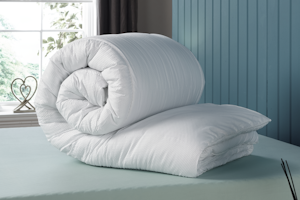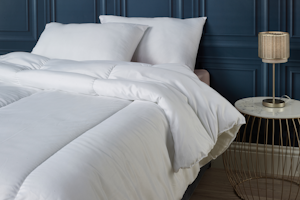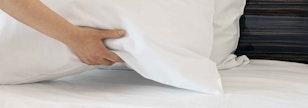20 Mar 2025
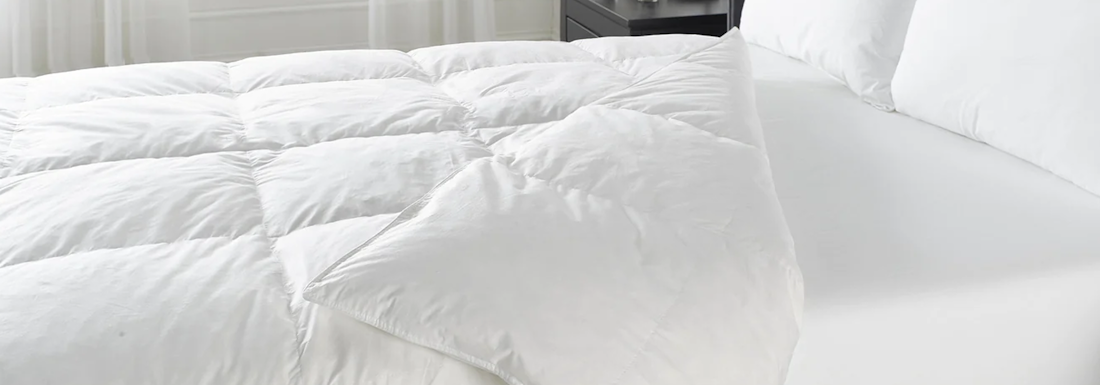
Duvet Tog Guide
17 Feb 2023
When shopping around for a new duvet, you’ll find that each product comes with a numerical tog rating. This raises the question of what ‘tog’ actually means, and which tog rating you should choose for your duvet. Fortunately, in this guide, we explain everything you need to know about tog ratings and their importance in your purchasing decision.
Duvet tog ratings reflect the insulating properties of the duvet in question. In other words, the tog rating is a numerical measure of a duvet’s ability to retain heat. Tog ratings range from 1.5 to 16.5; most duvets in the UK typically fall between 4.5 to 13.5 tog. In short, the higher the tog rating, the warmer and more insulating the duvet will be. Lower tog ratings tend to be cooler and lighter, whereas higher tog ratings are warmer and more insulating. However, the tog rating is only a measure of the duvet’s insulation, and doesn’t necessarily reflect its thickness or weight. You should choose a tog rating based on your personal preference for how warm you’d like your duvet to feel.
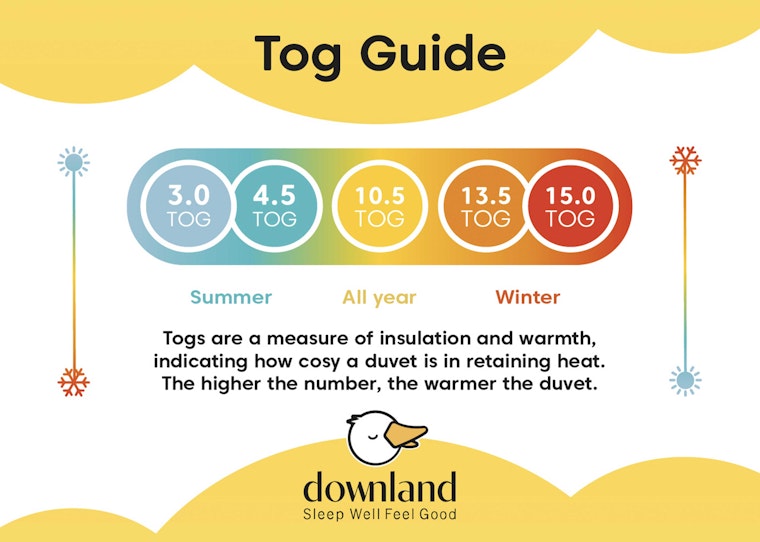
Explaining Duvet Tog Ratings: What Does Tog Mean?
All duvets come with a tog rating that represents how effectively the duvet is able to insulate and retain heat. In simpler terms, the tog rating reflects the warmth of a duvet. Lower tog ratings equate to cooler duvets, whereas warmer, more insulating duvets have higher tog ratings.
The full scale of duvet tog ratings ranges from 1.5 to 16.5, with most duvets falling between 4.5 to 13.5. Duvets with tog ratings at the lower end of this range are best for the summer months as they’re lighter and more breathable. At the top end of the range, the higher-tog duvets are more insulated, so these are typically winter duvets. Those in the mid-range are used as all-purpose duvets suitable for both the summer and winter months.
In the UK, the most popular tog ratings are between 10.5 and 13.5; it’s more common for people to choose a higher tog rating to suit the typically chilly weather conditions here. Some opt for having two different duvets for different seasons, e.g. having a 4.5 tog for summer and a 10.5 tog for winter. There are also ‘all season’ duvets, which are actually two duvets of different tog ratings clipped together. The lighter 4.5 tog duvet can be used in the summer, and the mid-range 9 tog in milder weather; in the winter, both duvets can be combined to create a single, optimally insulating 13.5 tog duvet.
Do Higher Tog Ratings Equate to Heavier Duvets?
No, a higher tog rating does not necessarily mean that the duvet is heavier in weight. Tog ratings solely reflect the insulating properties of the duvet; this is not dependent on how heavy or thick the duvet is, but rather the type and quality of its filling.
For instance, down duvets with high tog ratings can provide the same insulation as alternative duvets of an equivalent rating. Despite this, down duvets will feel lighter in weight than their synthetic counterparts; this is due to the structure and natural insulating properties of down as a filling.
Down is incredibly light, being fluffy soft filaments that create pockets of air which effectively trap heat. As such, less filling is necessary to achieve a high tog rating. This makes the duvets warmer, while also being lighter in weight and more breathable, than synthetic duvets of equivalent togs. Using our Luxury Goose Feather & Down 13.5 Tog Duvet as an example, these duvets have one of the highest tog ratings available; their feather and down filling allows for optimal insulation at no sacrifice of their breathability and comfort.
With that in mind, you should consider the tog rating, weight, and filling type of your duvet as independent factors. Deciding which duvet filling is best for you should involve the consideration of all of these aspects rather than the tog alone.
Is the Tog Rating of a Duvet Dependent on its Filling?
No, tog ratings are not solely based on the insulating properties of the duvet’s filling. Another factor that influences a duvet’s tog rating is the outer case that holds its filling; both the material and structure of the duvet casing can affect how warm it feels.
In addition to its filling material, the fabric of the duvet’s casing will have an impact on its warmth. Some duvets use cooling fabrics that lower their overall temperature, thus lowering their tog rating. For instance, duvets with 100% cotton cases have a cooler feel; cotton is a highly-breathable fabric that allows body heat and moisture to dissipate from the duvet. Synthetic fabrics like polyester and microfibre are less breathable, so these cover materials create warmer-feeling duvets.
Also, the structure of the duvet’s casing can affect its comfort and thermal properties. Duvets with a higher volume of filling have larger pockets encasing this filling. Oppositely, those with a lower volume of filling have smaller casing pockets. Duvets with less filling and smaller casing pockets will have an improved drape and fewer cold spots; this is providing that the filling is a high-quality and well-insulating material like down.
As an extra note, the thread count of the casing material can impact the overall feel of the duvet. In bedding, ‘thread count’ refers to the number of threads the material has per square inch of fabric. When the thread count is higher, i.e. there are more threads per square inch, each individual thread is finer. Consequently, fabric with a higher thread count will feel softer to the touch. Although thread count doesn’t necessarily impact the duvet’s warmth, it does affect softness, making this an important consideration nonetheless.
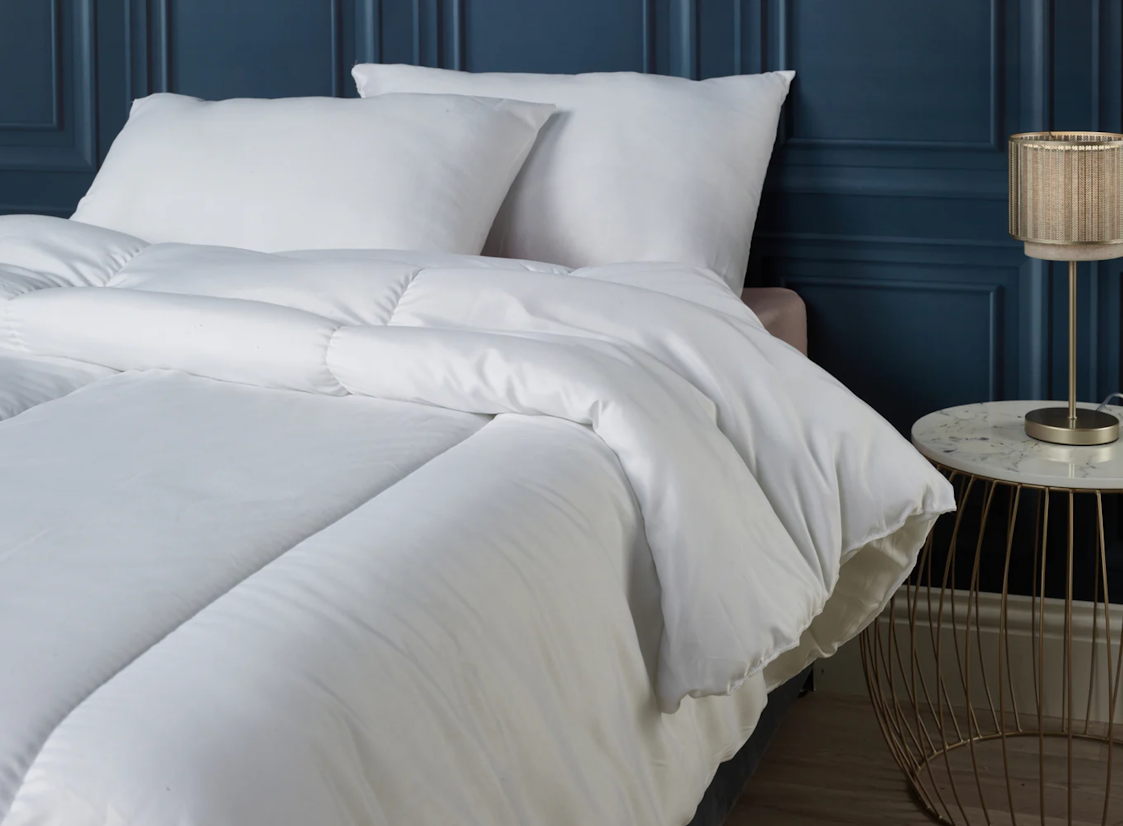
Which Duvet Tog Should I Choose?
You should choose a duvet tog based on your preferences for how warm you want the duvet to be. As we’ve now explained, duvets with higher tog ratings will feel warmer than those with lower togs. So, when choosing a tog rating, you must consider the season and how warm you typically feel when in bed.
For a quick reference, see our table below that outlines each tog rating, their ideal seasons, and how they feel:
|
Duvet Tog Rating |
Suggested Season |
Feel of Duvet |
|
2.5 Tog to 4.5 Tog |
Warmer Months of Summer |
Cool, lightweight and breathable |
|
7.0 Tog to 10.5 Tog |
Milder Months of Spring & Autumn |
Ideal cosiness and heat retention for milder temperatures |
|
12.0 Tog to 13.5 Tog |
Coldest Months of Winter |
Retains high heat in cold temperatures, still lightweight and breathable if the filling is down |
|
Combined 4.5 Tog and 9 Tog |
Adaptable for All Seasons |
Lower 4.5 tog duvet will feel cool, higher 9 tog duvet will feel cosy, both duvets combined will retain high heat equivalent to a 13.5 tog duvet |
Beyond our suggestions above, the tog rating you choose should ultimately be based on your individual preferences. You need to take into account how you usually feel in bed. For example, if you’re a hot sleeper or prone to night sweats, opt for a low or mid-range tog; a 10.5 tog duvet may be preferable over a 13.5 tog in the winter months for such sleepers.
Similarly, if you prefer to be really warm in bed, you may choose a higher tog even in the summer. Like we’ve said, many choose to invest in two separate duvets with different togs or an all-season combined tog duvet; this will give you the most control over your sleeping temperature throughout the year.
Which Duvet Tog Rating is Best for Children?
If you’re purchasing for a child, it’s best to choose a duvet with a low tog rating of 4.5. This is the best tog rating for children aged between 12 months and 10 years old. No duvet is suitable for babies under 12 months regardless of its tog rating.
Children have smaller bodies than adults, so they’ll naturally generate more heat when they’re sleeping. Because of this, they won’t require as high a tog rating as an adult; a duvet with too high a tog rating will only cause them to overheat. A duvet with a lower tog rating will instead trap enough hot air around their bodies to keep them warm. So, for toddlers and children under the age of 10, choose a lightweight 4.5 tog duvet throughout the year. If extra warmth is necessary, add a light blanket rather than giving them a higher tog duvet.
For infants under 12 months, you shouldn’t use any type of duvet or pillows. Such bedding is unsuitable for babies this age as they’re highly prone to overheating and suffocation. You should instead provide children under 12 months old with blankets or sleeping bags specifically designed for their age. Once they reach a year old, you can then give them a low 4.5 tog duvet.
